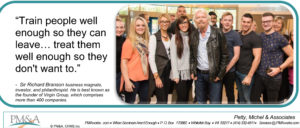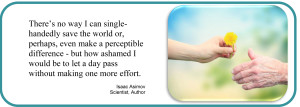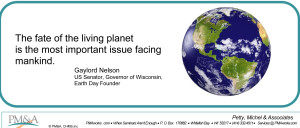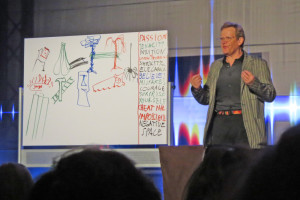“Dreams are free.
Goals have a cost. Time, effort, sacrifice, and sweat.
How will you pay for your goals?”
~Usain Bolt
For a printable copy of this tent poster click here email us.

“Dreams are free.
Goals have a cost. Time, effort, sacrifice, and sweat.
How will you pay for your goals?”
~Usain Bolt
For a printable copy of this tent poster click here email us.
“The world is changed by your example, not by your opinion.”
~Paulo Coehlo
For a printable copy of this tent poster click here. [LINK]
“Champions aren’t made in gyms.
Champions are made from something they have deep inside them – a desire, a dream, a vision.
They have to have the skill, and the will. But the will must be stronger than the skill.”
~Muhammad Ali – 1942-2016
For a printable copy of this tent poster email us.
“I have just three things to teach: Simplicity, patience, compassion. These three are your greatest treasures.” ~Lao Tzu
For a printable copy of this tent poster click here [LINK]
“Train people well enough so they can leave… treat them well enough so they don’t want to.”
-Sir Richard Branson business magnate, investor and philanthropist.
 For a printable copy of this tent poster click: [LINK]
For a printable copy of this tent poster click: [LINK]
“People are like bicycles…they can keep their balance only as long as they keep moving.”
~Albert Einstein
For a printable copy of this tent poster visit: Einstein Bicycle balance
“The way we’re running the company, the product design, the advertising– it all comes down to this: let’s make it simple, really simple.” Steve Jobs (Walter Isaacson) 1.
If you could simplify your business even more than it is, you would make more money and have less stress.
There is a direct relationship between simplicity and productivity, and an inverse relationship between complexity and productivity.
The most successful businesses have capitalized on this fact. This was one of Apple computer’s unique selling propositions – to focus on the simple and eliminate what wasn’t essential.
From its inception, the Apple Macintosh computer was designed with simplicity in mind. Other companies have focused on simplicity: McDonalds order via drive-through, Ikea with its simple design, and Amazon with one-click ordering.
Siegal-Gale is an international marketing firm that has studied simplicity in business and has been able to profile and rank businesses according to their simplicity. They call this the Global Brand Simplicity Index and have found that those companies that rank the highest, also outperform companies that rank as more complex. Their report states (2):
You want to simplify the experience your chiropractic (or other) patient has in your office. From the first phone call, first appointment, examination, report of findings, patient finances, and scheduling, discover ways to simplify your procedures.
Your intake forms may be redundant or complicated, there may be too many rote statements or “scripts” for your staff to say to patients, or there can be extra pathways that your patients have to travel, like so many rabbit trails, where they can get confused and the flow slows down. Staff, or doctors, may have too many decisions to make at each visit.
For example – what extra therapy should the patient receive? Not knowing, I have heard support staff simply ask the patient what therapy they wanted today, as if they were ordering a latte. And as we know, there are definitely too many codes and documentation rules to follow for the doctor. Going total cash is one solution, but intelligent software, dictation, and scribes are other solutions.
Many, if not a majority of the more profitable offices that I have worked with over the years practiced what could be called “straight” chiropractic. The straight practice (no additional modalities) works well, when it does, because its procedures and flow are simple. It is usually more profitable because extra overhead hides in the complicated.
Steve Jobs again: “People think focus means saying yes to the thing you’ve got to focus on. But that’s not what it means at all. It means saying no to the hundred other good ideas that there are. You have to pick carefully. I’m actually as proud of the things we haven’t done as the things I have done. Innovation is saying no to 1,000 things.”— Steve Jobs, WWDC 199(3)
I am not advocating no supplements, no exercise physiology, no electrical therapy. But to be honest, how much of this gets used in your office? I know offices — right now, and have known hundreds more, that have equipment lying around unused or bottles of vitamins collecting dust on overlooked shelves.
You have to embrace first only those unique outcomes that you can deliver. Work backwards and add only the most critical steps. “Begin with the end in mind”, as Stephen Covey observed in high producers.
For a chiropractor, this means adjust. (For other professions: what is your core function?) One of the first doctors I worked with when I moved to Wisconsin in 1988 worked closely with Clarence Gonstead. His license plate read: I ADJUST. He had a full practice, chuckled a lot, and seemed to make a nice living.
Start with this first, and then add additional services carefully – if you want.
Secondly, educate. Educate your patients, your team, and your community. But your education has to be simple. Your message has to be concise. One doctor we have worked with over the years has a waiting list practice, with nonstop patient, and even some MD, referrals. He doesn’t do a 4-day report of findings and he doesn’t do a 2-day report of findings on new or reactivated patients.
He just very intently adjusts and talks about the adjustment and what he is adjusting. From there, he then also gets into other health topics such as toxins (vaccinations), nutrition and weight, and exercise.
This is a good model: start with your core service and move out from there. For chiropractic education, you can use simple metaphors like “pinched nerve,” “garden hose,” “rusty gate hinge”, and how the body fighting toxins creates heat (inflammation), etc.
And keep educating your patients with care classes, lending library, table talk, movie nights, special speakers, case histories, and testimonials.
And do this first and continually with your support team. This is not done enough!
One method to discover what to simplify is to regularly practice your procedures. For example, do a rehearsal of what happens when a new patient comes into your office on their first day, 2nd day, 3rd day, etc. You will flush out confusions, redundancies, and extra motions that complicate the patient experience.
Outside of your office, the same applies. Educate your community on what you do. What is your simple selling proposition that people want?
For example, someone asks you “what do you do?”: “Well…
we help to improve your health, we relieve your pain,
and we increase your game – naturally!
No drugs, no surgery, and we guarantee you have fun in the bargain.”
How’s that? A simple and a desirable unique selling proposition (USP). (You can use this in all your marketing communications – no charge!)
Lastly, there is fun. You can and should have fun doing this. And so should your patients and support crew.
Patients will mostly remember how they feel after leaving your office. Was it a pleasant, enjoyable experience? Was it fun?
Practice life can often bring about a kind of serious hue over the office. Administrative errors, missed appointments, a dissatisfied patient, a staff member out for the day, too many bills – all of this can create an extra layer of anxiety or seriousness in the office.
Fight this by being grateful for all the wonderful outcomes of your patients. Work on having a “the gratitude attitude.”
And as you simplify your processes, you will find that everyone’s attention becomes freer to enjoy helping each other — to help the patients.
Simple is more fun and profitable.
So here is a question for you: Which comes first, the fun or the smile?
Well, you can kick things off right now… right now with a smile. Actually, smiling is simpler and requires less muscles than frowning.
Frowning is complex, so start right now by smiling.
Try it.
See? Already your business and life is simpler and better – and funner.
-Ed
(To help you keep things simple, you can order two magnets of the above image for your office, courtesy of PM&A while quantities last. Click here to order. We will mail them to you at no charge.)
For a printable copy of this article click [The Power of Simplicity]
“There’s no way I can single-handedly save the world, or perhaps, even make a perceptible difference –
but how ashamed I would be to let a day pass without making one more effort.” ~ Isaac Asimov
For a printable copy of the Tent poster click here: Make a Difference
“Be suspicious of convention.
Take charge of your own thinking.
Rouse yourself from the days of unexamined habit”
-Epictetus
For a printable version of this tent poster click here Suspicious of Convention
“People work better when they know what the goal is and why.”
-Elon Musk
For a printable copy of this tent poster click: The Goal and Why Musk
I am standing on a beach by the partially ice-covered Lake Michigan, sometimes referred to as part of the “Third Coast.” It is a good day!
Once a year I send out a promotion for the wildest and most unique chiropractic seminar I have seen in 30 years.
“Out-of-the-box” is a cliché that doesn’t really do Cal Jam justice. Like extreme sports, Cal Jam pushes the boundaries of what is customary and conventional.
But isn’t that chiropractic? Isn’t that you?
Chiropractic is unique (and wild) because it has purpose and soul.
Purpose and Soul, plus plenty of… Rock and Roll.
At Cal Jam!
Hope to see you there!
Date: March 18-20, 2016
Link to site: California Jam: www.CaliforniaJam.com
“The more you are motivated by love, The more fearless & free your action will be.”
~Dalai Lama
Printable version of the tent poster email services@pmaworks.com
“There is a child inside me that wants to come out and do something to surprise all the adults.”
~Philippe Petit
Printable Version of the Tent Poster [Link]
“If you want to build a ship, don’t drum up the men to gather wood, divide the work and give orders.
Instead, teach them to yearn for the vast and endless sea.”
~Antoine de Saint-Exupèry
For a printable version of the tent poster: Yearn for the Sea
Everybody, Somebody, Anybody, and Nobody were members of a group
There was an important job to do and Everybody was asked to do it.
Everybody was sure that Somebody would do it.
Anybody would have done it, but Nobody did it.
Somebody got angry because it was Everybody’s job.
Everybody thought Anybody would do it, but Nobody realized that Anybody wouldn’t do it.
It ended up that Everybody, blamed Somebody, when Nobody did, what Anybody could have done.
(abridged version of a poem by Charles Osgood)
Printable version of the tent poster The Parable of Responsibility
“We live in a world in which we need to share responsibility, it’s easy to say “It’s not my child, not my community, not my world, not my problems”.
Then there are those who see the need and respond, I consider those people my heroes.”
~Fred Rodgers
Printable version of the Tent Poster Mr Rodgers Responsibility
“The fate of the living planet is the most important issue facing mankind”
-Gaylord Nelson

Click here for a printable copy of the tent poster living planet
“Most of the people I talked to thought that it would be a financial disaster… closed and forgotten within the first year.”
For a printable copy email us.
FORTY ONE YEARS AGO, around this time of year (August 7), a twenty four year old managed to sneak up to the twin tours of the World Trade Center, shoot a cable to the other side, get it rigged up tight, and walk across it to the other side. Actually, he made 8 passes, performed dances and entertained an audience a 1/4 of a mile below. He finally came in when it started to rain.
He was arrested, but the the charges were later dismissed if he performed for children in Central Park, which he did.
I recently had the opportunity to listen to Philippe Petit (on August 7, 2015), now 65 years old. He gave a stirring presentation in San Francisco to chiropractic health professionals at the Wave, a seminar put on by Life West Chiropractic College.
Philippe was born in 1949 and still very active. He considers himself, among all things, an artist. But he also juggles, climbs rocks, fights bulls, fences, builds structures with 18th century tools and considers himself an accomplished equestrian.
He explained that he learned early in life to follow his passion and his intuition. But his creativity seemed to be overlooked or given little importance when he was young and so he felt that it must be illegal.
In his book Creativity, Philippe writes: “The creator must be an outlaw. Not a criminal outlaw, but rather a poet who cultivates intellectual rebellion.”
In his talk to us on August 7th, he offered some tips, or precepts that he thought might help us as they have helped him in his life.
He began by talking about his passion to pursue his goals. But right next to that, he emphasized the importance of tenacity. This was a word that included determination, discipline, preparation, and training to do what was needed to be done to achieve those goals about which you are passionate.
He exhibited this nearly a half a century ago as he pursued his goal to walk from one 1,300 foot tall building to another on just a wire. He started planning the walk when he was only 17 living in Paris. The Towers were not yet built. Certainly, the walk itself took immense focus at the time. But it lasted only less than an hour. The real work was in the planning and preparation and training. This took tenacity.
He stressed to listen to your intuition. When you have a question or a problem, listen to your gut and an answer, sooner or later, will visit you. But you do have to listen.
He emphasized simplicity in all that you do, but still be elegant. And don’t be afraid to make mistakes. This is how we learn and move forward. All this, of course, takes courage.
You have to believe in yourself. (Or as Dr. Jimmy Parker used to say, you have to have “FCB – Faith, Confidence and Belief.”) In your role of doctor, provider, and as a professional team member, you have to have faith in yourself and in the services you provide.
In our 3 Goals System of Practice Development, the Third Goal includes your greater purposes. These go beyond financial demands (Goal 1), which are necessary, or profession and business competence (Goal 2), which should be sought. But above it all are your Greater Purposes, your highest values — professionally and personally, that we really seek and that make life worth living.
We learn at an early age to quell our passions and creativity and to fall in line with convention. Obey and comply. And, to some extent, this is necessary for a society and a business to function. But in the bargain, we often lose our spirit. Our creative aspirations, our sense of fellowship with each other, and the outrage at the wrongs that we see — these gradually lose their importance. Our greater purposes become blunted — or even forgotten.
Certainly, this has happened to many people in your community as they “report in,” zombie like to the local drug store for “health care”, especially if it is promoting “free flu shots.” (Average drug prescriptions per person in 1993 was 7.1 In 2014 it was 12.2 And watch out for anyone over 50 where the average prescriptions used are 19, and over for those over 65 – 27. That’s right – 27 prescription medications per person. Average!2)
It is important to keep your greater purposes in sight and to respect them enough to keep them alive. They can and should be integrated into your professional life as you do not work in a factory assembly line as your parents or grandparents may have, or as those who produce your cool t-shirts and running shoes do now. For example, if you like children, have pictures of kids on your walls and have a special “Kids Day.” If you like running, put up pictures of runners and get your patients to join more running clubs. If you want to help the homeless kids in your town, promote a donation program for the local shelter.
Back at the seminar: I noticed that some of the presentations were held in ballrooms that had special, but temporary names. For example, there was the “The Reggie Gold” ballroom, the “Frank Sovinsky” ballroom, and the “Lloyd Latch” ballroom.
In the mid 1980’s, I worked for several years directly for and with Dr. Lloyd Latch. Though he didn’t promote it much, I am sure that he did have the largest chiropractic clinic in the world. While his personal production was high, the total office saw over 2,000 visits per week. The key was that he had created a wonderful team of doctors adjusting patients in 28 adjusting rooms and supported by a dedicate team of professionals.
And what was a key to his success? Over and over I heard Dr. Latch tell his doctors, and others who would visit, that success was “an inside job.”
I think this is exactly what Mr. Petit was getting at.
Success doesn’t come from the latest marketing procedure… it comes from deep inside. It comes from your heart, your passion, your imagination, and the tenacity to work and train daily.
Mr. Pettit says that there are –
“qualities inside all of us, that we are rarely encouraged to recognize
but that are essential to make our dreams come true, to plan, to construct a wondrous life.”3

Successful people learn from others, but ultimately take their own counsel.
As Philippe wrote:
“Observation was my conduit for knowledge, intuition my source of power.”3
So, follow your greater purposes and integrate them into your professional and work life. Allow your team members to also pursue their greater purposes – and you will see your practice become more creative, productive and wondrous.
Carpe Diem (seize the day),
Ed
———————–